Tariffs Trigger Operational Overhauls: F&B Leaders Forecast Unrest Into 2026
This article was originally featured on The Food Institute - Written by Kelly Beaton
CHICAGO – Venerable industry veteran Ron Tanner began a presentation on July 16 with a simple question: “How many of you are concerned about tariffs?” he asked, looking out upon a gathering crowd at IFT FIRST.
Instantly, nearly every attendee’s right arm shot up.
With President Trump seemingly intent on keeping tariffs in the news on a daily basis, the levies are never far from the minds of F&B business leaders. That much was apparent at the recent IFT FIRST presentation titled “Trade Policy and the Real Cost to the Food System,” led by Tanner (accompanied by this article’s author), which drew a sizable crowd.
One of the first slides presented by Tanner, the president of Tanner Food Group, noted that the U.S. is the largest importer in the world, representing $4.1 trillion in value. American companies are facing significant challenges, however, as trade unrest continues with countries like Mexico, Canada, China, and many more.
“With the ambiguity in direction, a lot of organizations in food and beverage are going to get squeezed relative to their profit margins, because it’s creating margin pressures that you simply can’t plan for,” said Alex Kushnir, a partner in the consumer goods and retail practice at the Baringa consultancy.
“There’s a very real phenomenon I’d call ‘strategic stall’ happening in boardrooms right now,” Amanda Russo, CEO of Cornerstone Paradigm Consulting, recently told The Food Institute. “Many clients’ concerns are around what I’d equate to tariff fatigue. Suppliers just can’t sustain what’s going on; they either cut products or services, or have to close altogether.”
The ongoing trade war “has created a state where business leaders are hesitant to act decisively – because, by the time the ink dries, policy may shift again,” the CEO added.
Business leaders have but one certainty right now: this trade war appears poised to stretch into 2026. In the meantime, experts expect categories like cereal, energy drinks, and candy will be greatly impacted by trade unrest.
“There’s a fear that certain food categories may never recover from tariffs and GLP-1 (weight-loss drugs). Consumer preferences are changing a lot right now,” said Amrita Bhasin, CEO of Sotira, a distributor of overstock and short dated inventory.
Bold Tariff Predictions
For the food industry, the immediate impacts of tariffs will be felt in raw ingredients and packaging. Consider, for example, that 90% of the avocados in the U.S. are imported from Mexico. And, such produce typically relies on packaging that features imported polypropylene.
“Players in the industry are rushing to find domestic suppliers,” explained Javier Palomarez, CEO of the U.S. Hispanic Business Council. “And, in some cases, there is no domestic option.”
Trade unrest and inflation have already factored into considerable shifts in consumer behavior. Many shoppers are clutching tightly to their wallets these days. Thus, industry leaders feel private-label products could benefit.
“Consumers are opting for lower-priced alternatives in categories with limited product differentiation – like cheese, eggs, and bottled water – where private-label products are winning,” noted Michael Della Penna, chief strategy officer at InMarket.
“The private label business will continue gaining traction with cost-conscious consumers. That pressure puts branded products in a position where they either need to cut price or cut operational waste,” said Stephen Dombroski, director of consumer products and F&B at QAD.
Dombroski feels the industry will soon shift toward a more resilient structure that prioritizes flexibility across sourcing, production, and labor.
“Tariffs are accelerating this shift by exposing the weakness of disconnected systems and rigid operations,” the executive said.
Considering the unrelenting nature of tariff news in 2025 – Trump set tariffs for 150 small countries just days ago – industry experts don’t anticipate a resolution any time soon.
“With trade policy increasingly tied to domestic politics and national security, tariffs may remain a long-term fixture rather than a temporary disruption,” said Max Levin, founder of logistics provider Snapl.
Businesses’ Plan of Attack
The 2025 tariffs have increased input costs at every stage: raw ingredients, packaging, transportation, and labor. As a result, businesses such as restaurants and grocery stores – which were already operating on razor-thin margins to begin with – are quietly cutting spending in areas like quality control.
Savvy business leaders are navigating this challenging period strategically rather than reactively.
“The way to anticipate it is essentially to come up with several scenarios, model those, and assign probability factors and risk factors,” Kushnir said.
“Know your numbers, watch your margins, and be ready to adjust your pricing. You can’t eat every increase and expect to stay afloat,” said CEO Joe Camberato, of nationalbusinesscapital.com.
Investment strategies are becoming more conservative and brands are looking at alternatives to their traditional operations as a way to hedge against trade policy shifts. This includes options like rerouting supply chains through lower-risk countries, noted Ramya Ravishankar, general counsel at HowGood.
F&B business leaders are also taking the following steps during the ongoing trade war:
Shifting country of origin
Narrowing product assortments
Stockpiling non-perishable goods
Leveraging bonded warehousing for flexibility
Most industry experts expect tariff-related issues to last for at least 6 months.
“By and large, a lot of the impact of tariffs right now is not really felt,” Kushnir said. “The tidal wave is still expected to be ahead of us.”
As a result, many F&B business leaders are feeling tariff fatigue.
“It’s exhausting trying to plan around something that changes every few months, sometimes every few weeks,” Camberato said. “But business is never a straight line; it’s always shifting.
“Most (businesses) are pumping the brakes a bit, taking a wait-and-see approach. When there’s uncertainty, especially around costs, you want to be cautious. But there’s a fine line between being cautious and being stuck. You’ve got to keep moving. Tweak your plans, make smart bets, but don’t freeze,” the CEO added.
